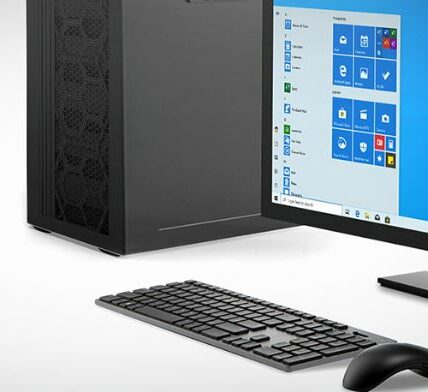Human-Computer Interactions (HCI) stands at the forefront of revolutionizing how we interact with digital technologies. As we venture into the future, the landscape of user experience design is evolving, driven by transformative trends within the realm of HCI.
Immersive Technologies: Engaging the Senses
**a. Virtual Reality (VR) and Augmented Reality (AR): The integration of VR and AR is redefining how users engage with digital content. From immersive gaming experiences to augmented workplace scenarios, these technologies offer a new dimension to HCI, creating more visceral and interactive encounters.
**b. Mixed Reality (MR): MR, blending elements of both VR and AR, seamlessly merges the virtual and physical worlds. This immersive approach allows for dynamic interactions, enabling users to engage with digital content within their real-world environments.
**2. Adaptive Interfaces: Tailoring Experiences to Individuals
**a. Personalized User Interfaces: Adaptive interfaces leverage machine learning and AI algorithms to understand user behaviors and preferences. This enables the creation of personalized digital environments, where each user’s experience is uniquely tailored for optimal engagement.
**b. Context-Aware Design: HCI is moving towards context-aware design, where interfaces adapt based on the user’s context—whether it’s their location, device, or specific needs at a given moment. This anticipatory design approach enhances user convenience and efficiency.
Natural Language Processing (NLP): Conversational Interfaces
**a. Voice-Activated Systems: With advancements in NLP, voice-activated interfaces are becoming more sophisticated. Users can interact with devices through natural language, initiating commands, conducting searches, and even engaging in complex conversations with AI-driven assistants.
**b. Conversational User Interfaces (CUIs): The rise of chatbots and conversational agents integrates NLP into various applications. From customer service interactions to intuitive app interfaces, CUIs are streamlining user engagement with seamless and conversational interactions.
Gesture-Based Interactions: Beyond the Touchscreen
As we look ahead, HCI is exploring gesture-based interactions that go beyond traditional touchscreen interfaces. From hand gestures to eye-tracking technology, users can navigate and control digital interfaces with intuitive movements, reducing dependency on physical touch.

Biometric Integration: Secure and Seamless Authentication
Biometric technologies are increasingly integrated into HCI to enhance security and streamline user authentication. Facial recognition, fingerprint scanning, and even behavioral biometrics contribute to a secure and seamless user experience.
Accessibility and Inclusivity: Design for All
The future of HCI emphasizes inclusivity, ensuring that digital experiences are accessible to users of all abilities. Designing interfaces that accommodate diverse needs, from providing alternative text for visuals to incorporating voice-guided navigation, reflects a commitment to universal usability.
Neurotechnology: Bridging Mind and Machine
In the realm of future HCI, neurotechnology is gaining attention. Brain-computer interfaces (BCIs) hold the potential to enable direct communication between the human brain and computers. While in early stages, this technology could revolutionize how we interact with digital interfaces.
Conclusion: Designing Tomorrow’s Digital Tapestry
As HCI continues to evolve, the future of user experience design promises a digital tapestry woven with immersive technologies, adaptive interfaces, and a commitment to inclusivity. The ongoing collaboration between human and computer interaction opens doors to unprecedented possibilities, reshaping how we engage with the digital landscape. Through these transformative trends, HCI paves the way for a future where digital interactions seamlessly integrate with our daily lives, offering richer, more intuitive, and personalized user experiences.





